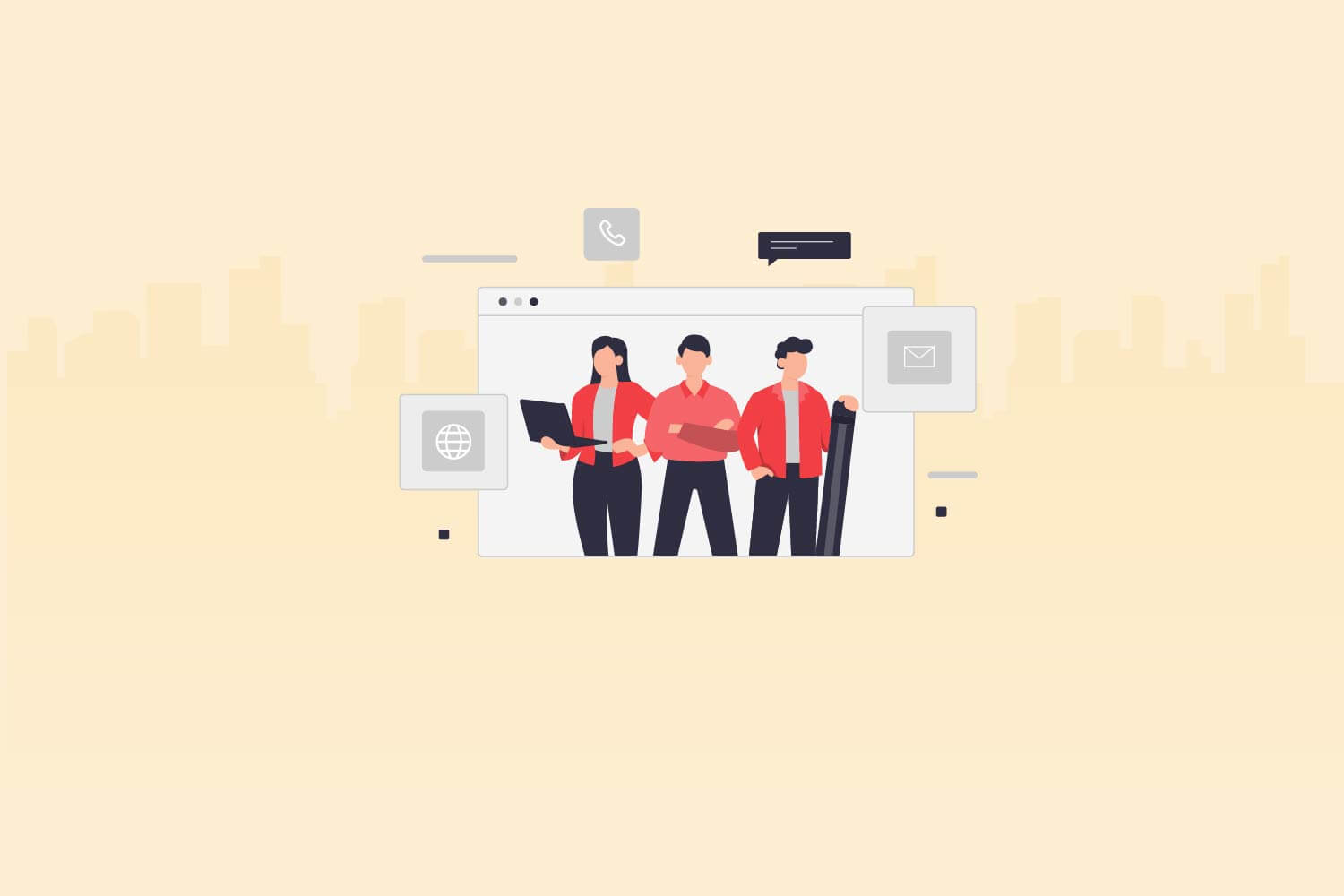Research shows that a positive work culture is not just a buzzword but a proven driver of organizational success. As organizations recognize the significance of employee well-being, collaboration, and diversity, they are increasingly prioritizing strategies to create and sustain a positive work culture. From recognizing and celebrating success to embracing diversity and fostering open communication, every aspect of the workplace plays a vital role in shaping the overall work environment.
Research conducted by Harvard Business Review reveals that fostering a positive work culture leads to higher employee satisfaction, productivity, and reduced turnover rates, ultimately benefiting the organization’s overall success.
In this blog, we delve into the key building blocks that lay the foundation for a positive work culture and explore effective strategies to sustain this positivity over the long term. By understanding the importance of cultivating such a culture and implementing evidence-based approaches, organizations can unlock the full potential of their workforce and achieve sustained growth and success.
Understanding the importance of a positive work culture
In today’s fast-paced and competitive business landscape, fostering a positive work culture has become more than just a feel-good concept; it’s a strategic imperative for organizations to thrive and succeed. A positive work culture goes beyond superficial perks or occasional team-building activities; it is a deep-rooted set of values and practices that permeate every aspect of the workplace.
- Enhanced Employee Engagement and Productivity: A positive work culture creates a sense of belonging and purpose among employees. When individuals feel valued, supported, and encouraged, they are more likely to be engaged in their roles, leading to higher levels of productivity and commitment to the organization’s goals.
- Improved Employee Retention and Talent Attraction: Employees are more likely to stay with an organization that prioritizes their well-being and offers a positive work environment. Additionally, a reputation for a positive work culture becomes a powerful magnet for attracting top talent, increasing the organization’s competitiveness in the talent market.
- Boosted Creativity and Innovation: In a positive work culture, employees feel empowered to share ideas, take risks, and think outside the box. This fosters a culture of innovation and creativity, where diverse perspectives are welcomed, and new solutions are encouraged.
- Better Collaboration and Teamwork: A positive work culture promotes collaboration and teamwork among employees. When team members trust and respect one another, they are more likely to communicate effectively, share knowledge, and work cohesively toward shared objectives.
- Reduced Stress and Improved Well-being: Work-related stress can have detrimental effects on employee health and overall well-being. A positive work culture prioritizes employee well-being by providing resources and support for managing stress and maintaining a healthy work-life balance.
- Enhanced Customer Satisfaction: Happy and engaged employees are more likely to deliver exceptional customer service. A positive work culture creates a ripple effect, where employees’ positivity extends to their interactions with customers, ultimately leading to increased customer satisfaction and loyalty.
- Stronger Organizational Resilience: During challenging times, such as economic downturns or industry disruptions, a positive work culture becomes a critical asset for an organization’s resilience. Employees who feel supported and motivated are more likely to adapt to changes, face challenges head-on, and help the organization navigate through uncertainties.
- Positive Impact on the Bottom Line: Contrary to the misconception that investing in a positive work culture incurs unnecessary costs, research has shown that organizations with positive work cultures enjoy improved financial performance. This is attributed to factors such as reduced turnover costs, increased productivity, and the ability to attract and retain top talent.
Fostering teamwork and collaboration
In a world where interconnectedness and collaboration are key to success, fostering teamwork and collaboration within an organization has become paramount. These two pillars form the foundation of a positive work culture, where employees work together harmoniously, synergizing their strengths to achieve shared goals and objectives. A workplace that values teamwork and collaboration creates an environment that is not only productive but also fulfilling and enjoyable for its employees.
- Encouraging Open Communication: Effective teamwork and collaboration rely heavily on open and transparent communication. When employees feel comfortable expressing their ideas, concerns, and feedback, it creates an atmosphere of trust and mutual respect. Leaders should encourage regular communication channels and ensure that all team members have a voice in the decision-making process.
- Building Trust Among Team Members: Trust is the bedrock of successful collaboration. Team members must have faith in each other’s abilities, intentions, and commitments. Trust is nurtured through consistent support, reliability, and accountability. When team members trust one another, they can collaborate more effectively, take risks, and innovate without fear of judgment or blame.
- Emphasizing a Shared Purpose and Goals: A positive work culture thrives on a collective sense of purpose and shared goals. When team members understand how their individual contributions align with the broader organizational objectives, they feel more motivated and invested in their work. This shared purpose unites the team and fosters a sense of belonging.
- Cultivating a Culture of Appreciation and Recognition: Acknowledging and celebrating the efforts and achievements of team members is crucial for promoting collaboration. Recognition not only boosts morale but also reinforces the value of teamwork. Leaders should create a culture where appreciation is a regular practice, and success is celebrated as a team accomplishment.
- Promoting Diversity and Inclusion: Diversity within teams brings varied perspectives, skills, and experiences, enriching the collaborative process. A positive work culture embraces diversity and inclusion, recognizing that it leads to more creative problem-solving and innovative solutions. Encouraging an inclusive environment where everyone’s ideas are respected fosters a stronger sense of collaboration.
- Providing Opportunities for Skill Development: Investing in the development of team members’ skills and competencies enhances collaboration. When employees feel supported in their professional growth, they are more likely to contribute actively to team projects and share their knowledge with others. Offering training and development opportunities also demonstrates the organization’s commitment to its employees’ growth.
- Facilitating Team-Building Activities: Team-building activities play a vital role in strengthening bonds among team members. Whether through team outings, workshops, or problem-solving exercises, these activities encourage camaraderie and trust. When employees connect on a personal level, it translates into improved collaboration and a more positive work culture.
- Leading by Example: Leaders play a crucial role in setting the tone for teamwork and collaboration. When leaders actively participate in team projects, demonstrate open communication, and value collaboration, it sends a powerful message to the rest of the organization. Leading by example fosters a culture where teamwork is not only encouraged but ingrained in the organizational DNA.
Leadership’s role in cultivating a positive work culture
Leadership plays a pivotal role in shaping the culture of an organization. As the driving force behind a company’s vision and values, leaders have the unique ability to influence the work environment and the attitudes of their team members. Cultivating a positive work culture is not a one-time effort; rather, it requires continuous commitment and active participation from leaders at all levels. When leaders prioritize and model behaviors that foster positivity, they pave the way for a thriving and engaged workforce.
- Setting a Clear and Inspiring Vision: A positive work culture begins with a clear and inspiring vision set forth by the leadership. When leaders articulate a compelling vision, it provides employees with a sense of purpose and direction. Aligning the organization’s goals with the values of its workforce creates a shared mission that employees can rally behind.
- Communicating and Reinforcing Core Values: Leaders must effectively communicate the organization’s core values and ensure that they are consistently demonstrated in daily operations. When values like integrity, respect, and collaboration are upheld by leaders, it reinforces their significance and encourages employees to embrace and embody them as well.
- Leading with Empathy and Emotional Intelligence: Effective leadership in a positive work culture involves empathy and emotional intelligence. Leaders who understand and connect with their team members’ emotions can better support their well-being and address their concerns. Empathy fosters a supportive environment where employees feel valued and cared for.
- Promoting Transparent and Open Communication: Transparent communication is essential for building trust within an organization. Leaders should encourage open channels of communication where employees feel comfortable sharing their ideas, feedback, and challenges. Transparent communication builds trust and enhances collaboration.
- Recognizing and Celebrating Achievements: Leaders who actively recognize and celebrate employee achievements reinforce a culture of appreciation. Celebrating milestones and successes, both big and small, demonstrates that hard work is valued and motivates employees to continue performing at their best.
- Providing Opportunities for Growth and Development: Investing in employee growth and development demonstrates a commitment to their long-term success. Leaders should provide opportunities for skill-building, learning, and advancement, empowering employees to reach their full potential and contribute meaningfully to the organization.
- Creating a Culture of Feedback and Continuous Improvement: A positive work culture embraces a growth mindset, where feedback is seen as constructive and opportunities for improvement are welcomed. Leaders should encourage regular feedback sessions, offering guidance and support to help employees excel in their roles.
- Addressing Conflict and Challenges Proactively: In any workplace, conflicts may arise. Leaders play a crucial role in addressing these issues promptly and constructively. By handling conflicts with empathy and respect, leaders can maintain a positive work environment and foster a culture of open communication and resolution.
- Encouraging Work-Life Balance: Leaders should advocate for work-life balance and lead by example. Encouraging employees to take time off when needed and promoting a healthy work-life integration shows that the organization prioritizes employee well-being.
- Embodying the Culture: Ultimately, leadership’s role in cultivating a positive work culture goes beyond words; it requires actions that align with the desired culture. Leaders must consistently embody the values they promote, leading by example to inspire employees and solidify the positive work culture throughout the organization.
Prioritizing mental and physical health
In today’s fast-paced and demanding work environment, organizations must recognize the critical importance of prioritizing employee well-being. Nurturing the mental and physical health of employees goes beyond being a moral obligation; it is a strategic investment that leads to increased productivity, reduced absenteeism, and higher levels of job satisfaction. A workplace that places a premium on employee well-being cultivates a positive work culture where individuals can thrive personally and professionally.
- Promoting Work-Life Balance: Encouraging a healthy work-life balance is vital for supporting employee well-being. Leaders should emphasize the importance of taking breaks, using vacation days, and maintaining boundaries between work and personal life. A balanced lifestyle enhances employee happiness and prevents burnout.
- Creating a Supportive Work Environment: A supportive work environment is crucial for nurturing employee well-being. Organizations should foster a culture where employees feel comfortable seeking help or discussing mental health challenges without fear of stigma. Providing access to resources like counseling or employee assistance programs can be invaluable.
- Offering Flexible Work Arrangements: Flexible work arrangements, such as remote work or flexible hours, can significantly contribute to employee well-being. These options allow employees to tailor their work schedules to fit their personal needs and can lead to increased job satisfaction and a better work-life fit.
- Encouraging Regular Exercise and Physical Activity: Physical health is closely linked to mental well-being. Employers can promote employee health by providing opportunities for physical activity, such as offering gym memberships or organizing wellness initiatives. Regular exercise can reduce stress, improve mood, and boost overall health.
- Supporting Mental Health Awareness Programs: Organizations can play a vital role in promoting mental health awareness. Hosting workshops, seminars, or training sessions on stress management, resilience, and mental health first aid equips employees with valuable tools to manage their well-being effectively.
- Recognizing and Addressing Workplace Stressors: Leaders should identify and address workplace stressors to create a healthier work environment. Whether it involves streamlining processes, providing additional resources, or redistributing workload, minimizing stressors can positively impact employee well-being.
- Offering Employee Benefits for Well-being: Comprehensive employee benefits packages that include mental health support, access to healthcare, and wellness programs demonstrate a commitment to employee well-being. These benefits can attract and retain talent while fostering a culture that values health and happiness.
- Implementing Mindfulness Practices: Mindfulness practices, such as meditation or yoga, can enhance employees’ mental well-being by reducing stress and improving focus. Offering mindfulness sessions or incorporating mindful moments into the workday can contribute to a more relaxed and focused workforce.
- Prioritizing Mental Health Days: Recognizing the significance of mental health, some organizations have introduced mental health days as part of their leave policies. Allowing employees to take time off to prioritize their mental well-being reinforces the message that their health matters.
- Leading by Example: Leaders should actively model and prioritize their well-being to set a positive example for the rest of the organization. When employees see their leaders valuing and prioritizing their health, it encourages them to do the same.
Creating a transparent and supportive work environment
Communication is the lifeblood of any organization, and fostering open communication is crucial for creating a transparent and supportive work environment. When employees feel comfortable expressing their thoughts, concerns, and ideas freely, it builds trust, strengthens relationships, and enhances collaboration. A work culture that values open communication empowers employees to perform at their best, facilitates problem-solving, and contributes to overall organizational success.
- Building Trust through Transparent Communication: Transparency in communication is foundational for building trust within the workplace. Leaders should be open and honest with their teams about the organization’s goals, challenges, and decision-making processes. When employees trust that they are being informed truthfully, it strengthens their commitment to the organization’s mission.
- Encouraging Two-Way Dialogue: Effective communication is a two-way street. Leaders should actively encourage feedback and suggestions from employees and be receptive to their input. This open dialogue ensures that employees feel heard and valued, fostering a sense of ownership and engagement.
- Providing Regular Updates: Keeping employees informed about important developments within the organization is essential. Regular updates, whether through team meetings, newsletters, or email updates, ensure that everyone is on the same page and aligned with the company’s progress.
- Offering Anonymous Feedback Channels: To encourage honest and candid feedback, organizations can provide anonymous feedback channels. Anonymous surveys or suggestion boxes allow employees to express their opinions without fear of repercussions, leading to more open and constructive feedback.
- Emphasizing Active Listening: Effective communication goes beyond speaking; it involves active listening as well. Leaders should genuinely listen to their employees, showing empathy and understanding. Active listening fosters a culture of support and respect, where employees feel valued and appreciated.
- Addressing Conflicts Proactively: Open communication helps address conflicts before they escalate. Leaders should be approachable and willing to mediate conflicts in a fair and impartial manner. By tackling issues head-on, a supportive work environment can be maintained.
- Celebrating Diverse Perspectives: A transparent work environment embraces diverse perspectives and encourages employees to share their unique ideas and viewpoints. This inclusive approach enriches problem-solving and decision-making processes, leading to more innovative solutions.
- Recognizing and Acknowledging Contributions: Acknowledging and appreciating employee contributions is essential for boosting morale and motivation. Publicly recognizing individuals or teams for their efforts fosters a culture of appreciation, reinforcing the value of open communication.
- Setting Clear Communication Guidelines: Establishing clear communication guidelines ensures consistency and prevents misunderstandings. Leaders should define preferred communication channels, response times, and etiquette, creating a cohesive and effective communication framework.
- Learning from Feedback and Adapting: An organization that values open communication is willing to learn and adapt based on feedback. Leaders should use constructive feedback to drive positive change and improvement within the workplace continually.
Promoting positivity and motivation
Acknowledging and celebrating success is a powerful catalyst for promoting positivity and motivation within any organization. When employees’ efforts and achievements are recognized, it not only boosts their morale but also reinforces a culture of appreciation and excellence. A workplace that actively celebrates success fosters a motivated and engaged workforce, driving productivity and contributing to long-term organizational success.
- The Power of Appreciation: Recognizing employees’ hard work and contributions through simple acts of appreciation can have a profound impact on their motivation. Whether it’s a genuine “thank you,” a personalized note, or a shout-out in a team meeting, appreciation reinforces a sense of value and encourages employees to continue giving their best.
- Setting Clear and Meaningful Goals: Well-defined goals provide a clear sense of direction and purpose for employees. When individuals achieve milestones and meet objectives, leaders should take the opportunity to celebrate these successes, highlighting the progress made toward the organization’s vision.
- Creating a Culture of Recognition: Promoting a culture of recognition involves encouraging employees at all levels to acknowledge their colleagues’ achievements. Implementing a peer recognition program or a platform where employees can commend one another fosters a supportive and collaborative work environment.
- Tailoring Recognition to Individual Preferences: People appreciate recognition in different ways. Some might prefer public recognition, while others might prefer a more private acknowledgment. Leaders should be aware of these preferences and tailor their recognition efforts to each individual’s comfort level.
- Providing Tangible Rewards: In addition to verbal or written recognition, providing tangible rewards can further motivate employees. Whether through performance-based bonuses, gift cards, or small tokens of appreciation, these rewards serve as tangible reminders of the organization’s acknowledgment of employees’ efforts.
- Showcasing Success Stories: Sharing success stories with the entire organization creates a sense of pride and inspiration. Highlighting individual or team accomplishments through internal newsletters, company-wide emails, or notice boards spreads positivity and boosts motivation across the organization.
- Celebrating Milestones and Achievements: Major milestones and achievements call for special celebrations. Organizing team gatherings, departmental celebrations, or company-wide events to commemorate significant successes create memorable experiences and strengthen team bonds.
- Empowering Employee-Led Initiatives: Encouraging employees to take the lead in organizing recognition events or employee appreciation activities empowers them and demonstrates trust in their abilities. Employee-led initiatives contribute to a sense of ownership and engagement.
- Recognizing Effort and Progress: Recognizing effort, even when the desired outcome isn’t fully achieved, is equally important. Celebrating progress and the dedication employees put forth in their work encourages a growth mindset and motivates them to persist in their endeavors.
- Timing Matters: Timely recognition is essential for reinforcing the impact of success. Acknowledging accomplishments as close to their occurrence as possible ensures that the recognition is relevant and meaningful.
A cornerstone of a positive work culture
In a rapidly globalizing world, organizations are recognizing the undeniable value of diversity and inclusion in the workplace. Embracing diversity goes beyond meeting quotas or ticking boxes; it is about creating a culture that respects and values the unique contributions of every individual. When diversity and inclusion become ingrained in the fabric of an organization, it becomes a cornerstone of a positive work culture that fosters innovation, creativity, and success.
- Appreciating Diverse Perspectives: A diverse workforce brings together individuals with different backgrounds, experiences, and perspectives. Embracing diversity allows organizations to access a wealth of ideas and viewpoints, leading to more comprehensive problem-solving and better decision-making processes.
- Fostering a Sense of Belonging: Inclusive workplaces prioritize making every employee feel valued and included. When individuals from different backgrounds feel a sense of belonging, it promotes a positive work environment where they can thrive, resulting in increased job satisfaction and retention.
- Nurturing Creativity and Innovation: Diversity sparks creativity and innovation by encouraging employees to think outside the box and consider unconventional solutions. In an inclusive culture, employees are more likely to feel empowered to share their ideas, leading to a culture of continuous improvement.
- Attracting and Retaining Top Talent: Organizations that embrace diversity and inclusion attract a wide range of talent, including individuals from diverse demographics and backgrounds. Inclusive workplaces become magnets for top performers who seek environments where they can contribute and grow without bias or discrimination.
- Eliminating Bias in Decision-Making: An inclusive work culture actively seeks to eliminate bias in all aspects of the organization. From recruitment and hiring processes to promotions and recognition, decisions are made based on merit and potential, creating a fair and equitable work environment.
- Encouraging Learning and Education: Inclusive organizations provide learning opportunities for employees to understand and appreciate different cultures, experiences, and perspectives. Education helps cultivate empathy, breaks down stereotypes, and encourages open-mindedness.
- Strengthening Team Collaboration: Diverse teams bring together individuals with complementary skills, knowledge, and experiences. When employees collaborate with colleagues from different backgrounds, it enhances teamwork and communication, leading to better performance and results.
- Supporting Employee Resource Groups: Employee resource groups (ERGs) offer a platform for employees with shared backgrounds or interests to connect and advocate for inclusivity. Supporting ERGs demonstrates an organization’s commitment to fostering an inclusive work environment.
- Reviewing and Adapting Policies: Inclusive organizations regularly review policies and practices to ensure they promote diversity and inclusion. This includes policies related to recruitment, employee development, and work-life balance.
- Measuring and Tracking Progress: To assess the impact of diversity and inclusion initiatives, organizations should establish metrics and track progress over time. Regularly measuring and analyzing data on diversity and inclusion helps identify areas for improvement and reinforces the organization’s commitment to inclusivity.
Strategies for Long-term cultural improvement
Creating a positive work culture is a worthy goal, but sustaining that positivity over the long term requires ongoing effort and commitment. Organizations must proactively work towards cultural improvement and continuously nurture a positive environment to ensure lasting benefits for employees and the overall organization. By implementing strategic approaches, leaders can sustain positivity and create a work culture that fosters employee well-being, engagement, and productivity.
- Leadership’s Commitment to Positivity: Leadership plays a critical role in setting the tone for the organization’s culture. Leaders must lead by example, consistently demonstrating positivity, and embracing the values that underpin a positive work culture. Their commitment inspires others and reinforces the importance of sustaining positivity.
- Regular Employee Feedback and Surveys: Engaging in frequent feedback sessions and anonymous employee surveys can provide valuable insights into the state of the work culture. Understanding employee perceptions, concerns, and needs enables leaders to address issues promptly and implement necessary changes to sustain positivity.
- Continuous Learning and Development: Investing in employee learning and development contributes to sustained positivity. Organizations should offer opportunities for skill-building, career advancement, and personal growth. Engaged employees are more likely to contribute positively to the workplace.
- Empowering Employee Autonomy: Giving employees the autonomy and flexibility to make decisions within their roles empowers them and fosters a sense of ownership. Trusting employees to handle their responsibilities cultivates a positive work culture built on mutual respect.
- Recognizing and Rewarding Positivity: Acknowledging and rewarding positive behaviors and attitudes reinforces the organization’s commitment to a positive work culture. Establishing recognition programs that celebrate employees who exemplify positivity creates a culture that values and appreciates these qualities.
- Encouraging Social Interaction: Social interaction and team-building activities outside of work tasks promote camaraderie and collaboration. Organizing team outings, events, or recreational activities helps employees form strong bonds and strengthens the sense of community within the organization.
- Promoting Work-Life Integration: Promoting work-life integration, rather than a strict work-life balance, acknowledges the realities of modern life. Offering flexible work arrangements, remote work options, or wellness initiatives allows employees to better manage their personal and professional commitments.
- Prioritizing Mental and Physical Well-being: Incorporating mental and physical health initiatives into the work culture shows the organization’s commitment to employee well-being. Providing resources for stress management, wellness programs, and access to healthcare can significantly impact employee satisfaction and productivity.
- Emphasizing the Importance of Resilience: Encouraging resilience in the face of challenges promotes sustained positivity. Providing training on resilience and coping strategies equips employees to navigate difficulties effectively and maintain a positive outlook.
- Consistency in Values and Actions: Consistency between the organization’s stated values and actual actions is crucial for sustaining positivity. When employees observe that the organization lives up to its values, it strengthens trust and confidence in the work culture.
Conclusion
A positive work culture is not an overnight achievement; it requires continuous dedication and a collective effort from leaders, employees, and stakeholders. By understanding the importance of each building block discussed in this blog and implementing evidence-based strategies, organizations can create a work environment that fosters employee well-being, productivity, and engagement. Recognizing and celebrating success, embracing diversity and inclusion, fostering open communication, and prioritizing employee well-being are the pillars that sustain positivity in the workplace. As organizations commit to nurturing a positive work culture, they pave the way for innovation, creativity, and long-term success. Remember, it is not just about achieving short-term results; it is about creating a culture where employees thrive, feel valued, and are motivated to contribute their best to the organization’s journey towards greatness.
In the quest to attract and identify top talent, organizations require an advanced and reliable tool like Testlify to streamline their hiring process. With Testlify’s comprehensive Test Library and customizable assessments, recruiters gain valuable insights into candidates’ skills, aptitudes, and cognitive abilities, enabling them to make data-driven hiring decisions. By leveraging Testlify’s intuitive platform, organizations can ensure a fair and unbiased evaluation of candidates, promoting inclusivity and diversity in their talent acquisition efforts. Whether it’s assessing technical proficiency, problem-solving capabilities, or interpersonal skills.







